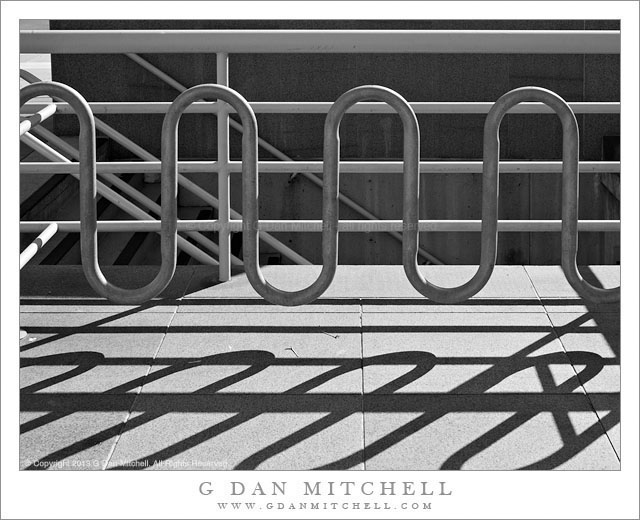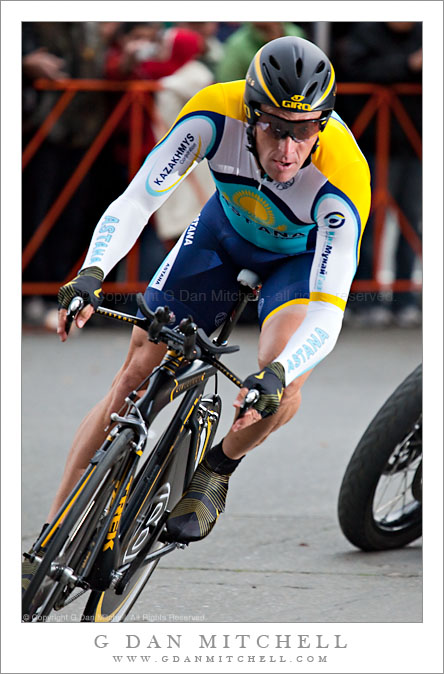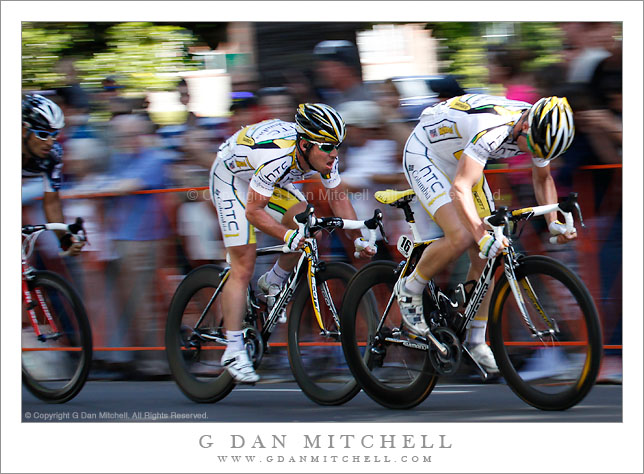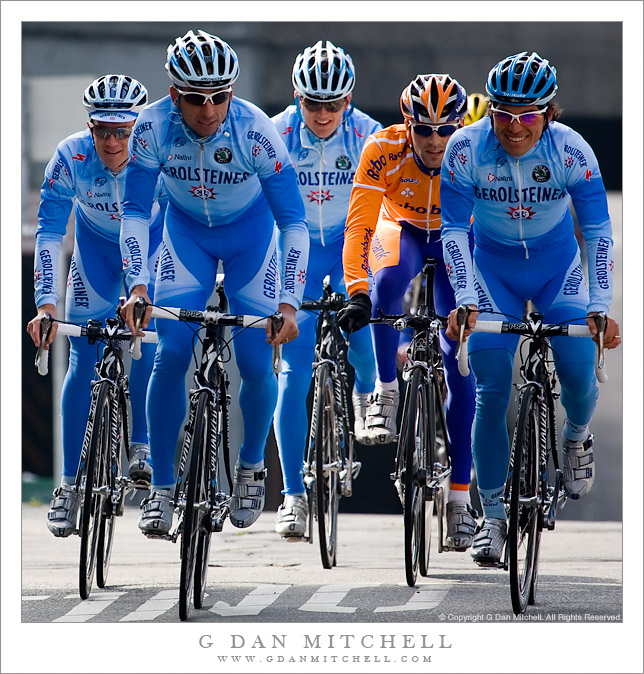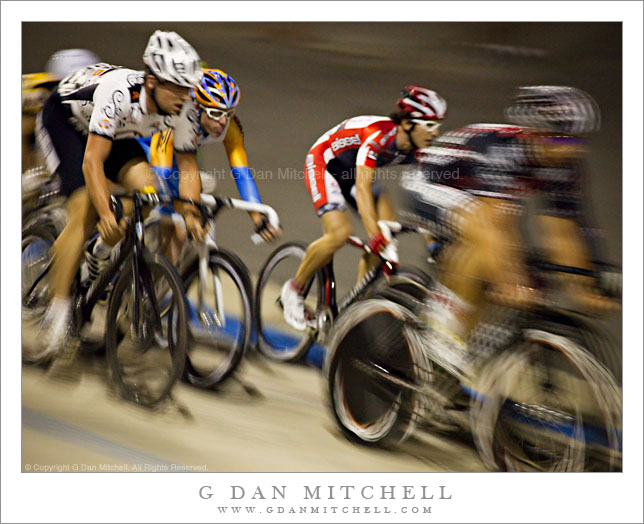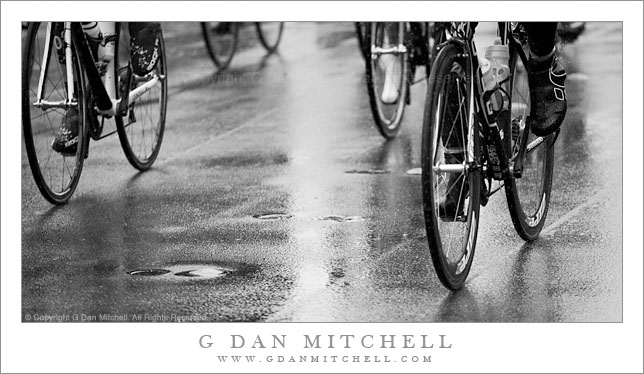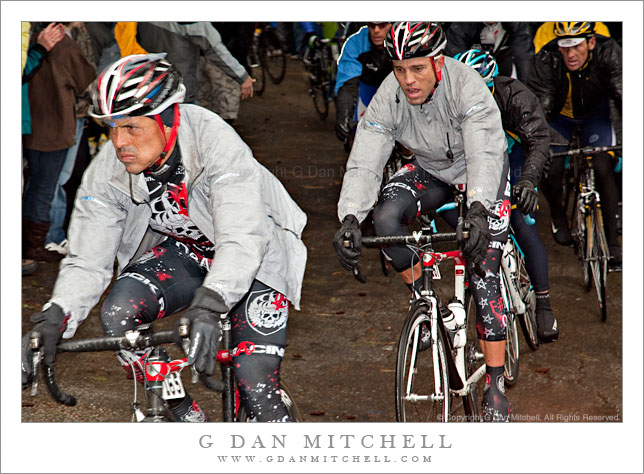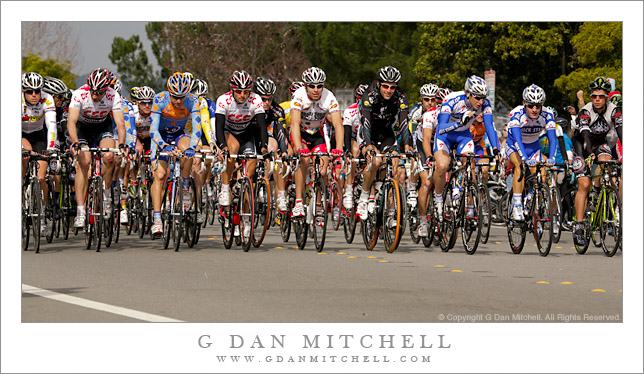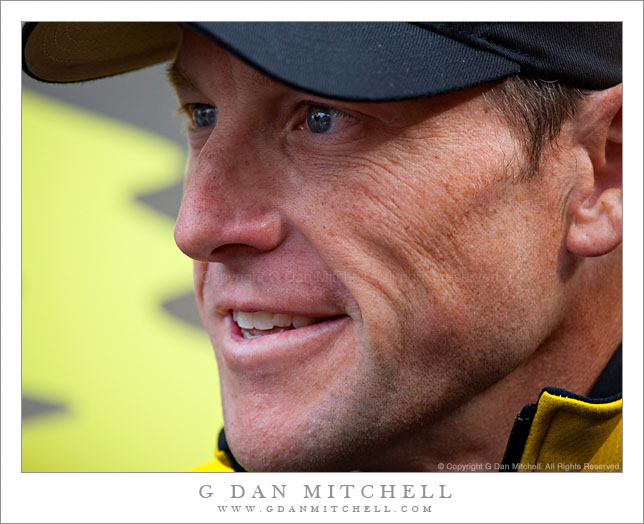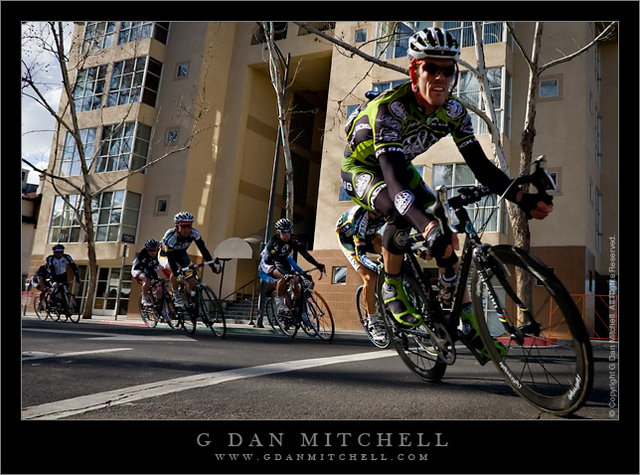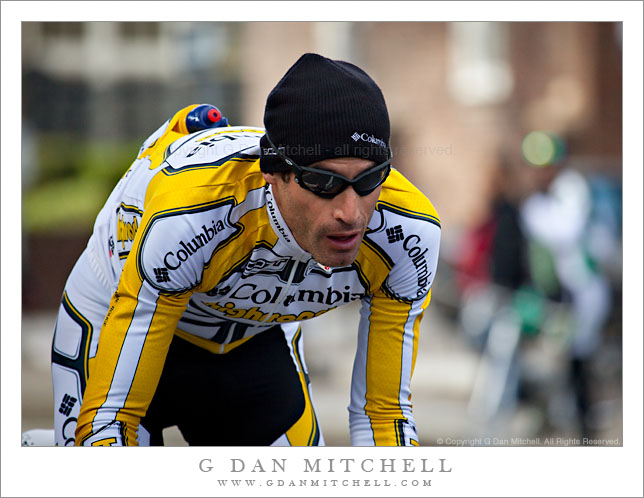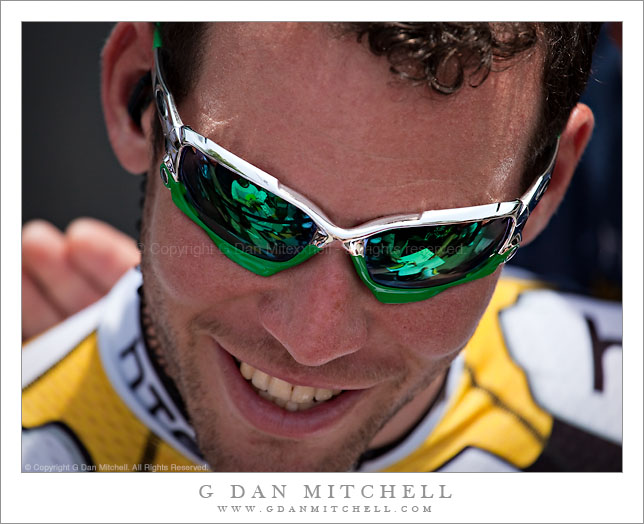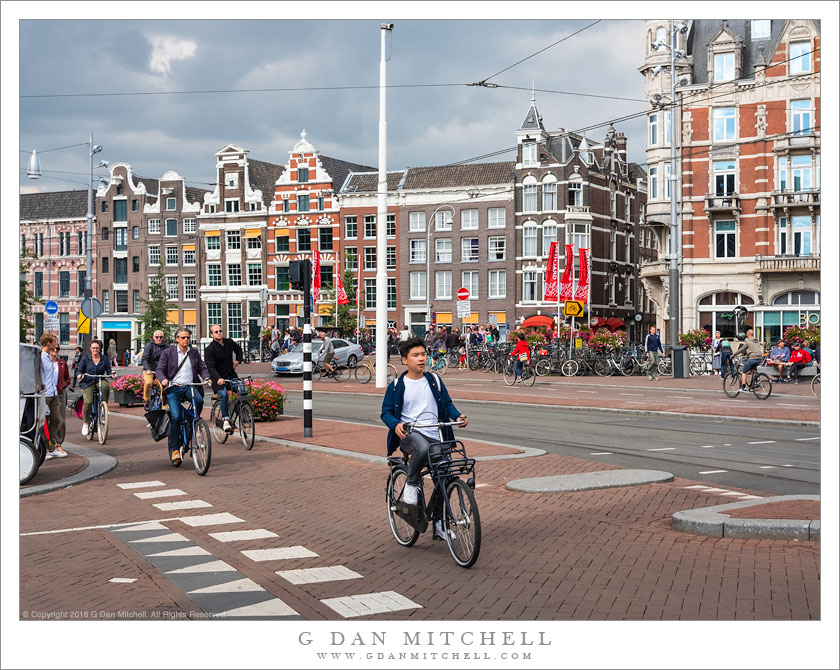
Amsterdam Bike Lane. © Copyright 2018 G Dan Mitchell – all rights reserved.
Cyclists on a bike lane on a cloudy day in Amsterdam
This photograph is partly about bicycles and Amsterdam, partly about that interesting and dark sky, partly about Amsterdam architecture and buildings that lean, and partly about that guy in the foreground. This summer was our first visit to Amsterdam. We stayed just outside of the central city and walked a few blocks to get to the well-known areas each day. For many years I was a very active cyclist in the US, but this is an entirely different scene. Almost no lycra, dropped handlebars road bikes, few mountain bikes… and lots of people in street clothes riding very utilitarian bikes… and parking them everywhere. Somehow the intersecting types of traffic — foot, transit, canal, bicycle, car — seem to coexist here, though it can be quite confusing at times for a first-time visitor.
This day’s light was remarkable. There was thin sunlight, but there were also some lovely dark clouds in the sky. If memory serves, we were in light rain later that evening as we ate dinner outside. We ended up talking to a couple who live in Amsterdam about many things. I confessed that I had initially been mildly disappointed to find the cloudy weather when we arrived, expecting it to be sunny. They more or less laughed and pointed out that this was the more typical sort of conditions. (They claimed that I would not see blue sky. That turned out to be wrong… but only by a little bit!)
See top of this page for Articles, Sales and Licensing, my Sierra Nevada Fall Color book, Contact Information and more.
 G Dan Mitchell is a California photographer and visual opportunist. His book, “California’s Fall Color: A Photographer’s Guide to Autumn in the Sierra” is available from Heyday Books and Amazon.
G Dan Mitchell is a California photographer and visual opportunist. His book, “California’s Fall Color: A Photographer’s Guide to Autumn in the Sierra” is available from Heyday Books and Amazon.
Blog | About | Flickr | Twitter | Facebook |
Email
All media © Copyright G Dan Mitchell and others as indicated. Any use requires advance permission from G Dan Mitchell.

